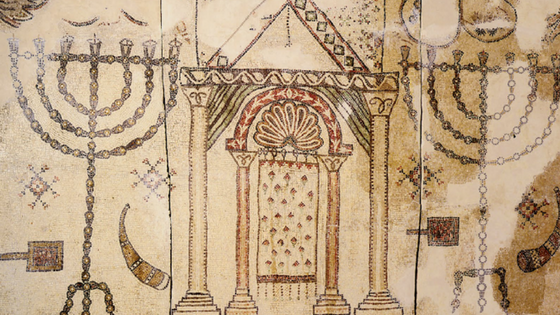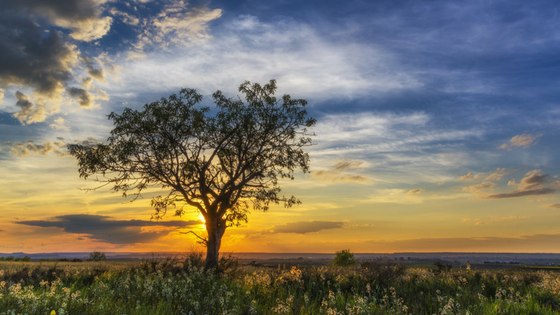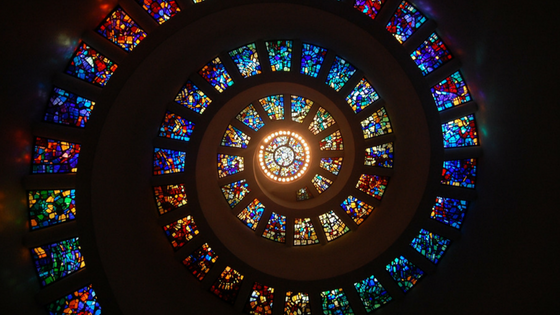@import url(https://www.ratisbonne.org.il/bk/wp-content/plugins/siteorigin-panels/css/front-flex.min.css); #pgc-3578-0-0 , #pgc-3578-0-2 { width:10%;width:calc(10% – ( 0.9 * 30px ) ) } #pgc-3578-0-1 { width:80%;width:calc(80% – ( 0.2 * 30px ) ) } #pl-3578 #panel-3578-0-1-0 { } #pl-3578 .so-panel { margin-bottom:30px } #pl-3578 .so-panel:last-child { margin-bottom:0px } #pg-3578-0.panel-no-style, #pg-3578-0.panel-has-style > .panel-row-style { -webkit-align-items:flex-start;align-items:flex-start } @media (max-width:780px){ #pg-3578-0.panel-no-style, #pg-3578-0.panel-has-style > .panel-row-style { -webkit-flex-direction:column;-ms-flex-direction:column;flex-direction:column } #pg-3578-0 .panel-grid-cell { margin-right:0 } #pg-3578-0 .panel-grid-cell { width:100% } #pgc-3578-0-0 , #pgc-3578-0-1 { margin-bottom:30px } #pl-3578 .panel-grid-cell { padding:0 } #pl-3578 .panel-grid .panel-grid-cell-empty { display:none } #pl-3578 .panel-grid .panel-grid-cell-mobile-last { margin-bottom:0px } }
11th SUNDAY OF THE YEAR
@import url(https://www.ratisbonne.org.il/bk/wp-content/plugins/siteorigin-panels/css/front-flex.min.css); #pgc-3554-0-0 , #pgc-3554-0-2 { width:10%;width:calc(10% – ( 0.9 * 30px ) ) } #pgc-3554-0-1 { width:80%;width:calc(80% – ( 0.2 * 30px ) ) } #pl-3554 #panel-3554-0-1-0 { } #pl-3554 .so-panel { margin-bottom:30px } #pl-3554 .so-panel:last-child { margin-bottom:0px } #pg-3554-0.panel-no-style, #pg-3554-0.panel-has-style > .panel-row-style { -webkit-align-items:flex-start;align-items:flex-start } @media (max-width:780px){ #pg-3554-0.panel-no-style, #pg-3554-0.panel-has-style > .panel-row-style { -webkit-flex-direction:column;-ms-flex-direction:column;flex-direction:column } #pg-3554-0 .panel-grid-cell { margin-right:0 } #pg-3554-0 .panel-grid-cell { width:100% } #pgc-3554-0-0 , #pgc-3554-0-1 { margin-bottom:30px } #pl-3554 .panel-grid-cell { padding:0 } #pl-3554 .panel-grid .panel-grid-cell-empty { display:none } #pl-3554 .panel-grid .panel-grid-cell-mobile-last { margin-bottom:0px } }
Parashat Korach
@import url(https://www.ratisbonne.org.il/bk/wp-content/plugins/siteorigin-panels/css/front-flex.min.css); #pgc-3539-0-0 , #pgc-3539-0-2 { width:10%;width:calc(10% – ( 0.9 * 30px ) ) } #pgc-3539-0-1 { width:80%;width:calc(80% – ( 0.2 * 30px ) ) } #pl-3539 #panel-3539-0-1-0 { } #pl-3539 .so-panel { margin-bottom:30px } #pl-3539 .so-panel:last-child { margin-bottom:0px } #pg-3539-0.panel-no-style, #pg-3539-0.panel-has-style > .panel-row-style { -webkit-align-items:flex-start;align-items:flex-start } @media (max-width:780px){ #pg-3539-0.panel-no-style, #pg-3539-0.panel-has-style > .panel-row-style { -webkit-flex-direction:column;-ms-flex-direction:column;flex-direction:column } #pg-3539-0 .panel-grid-cell { margin-right:0 } #pg-3539-0 .panel-grid-cell { width:100% } #pgc-3539-0-0 , #pgc-3539-0-1 { margin-bottom:30px } #pl-3539 .panel-grid-cell { padding:0 } #pl-3539 .panel-grid .panel-grid-cell-empty { display:none } #pl-3539 .panel-grid .panel-grid-cell-mobile-last { margin-bottom:0px } }
News Bulletin May 2018
@import url(https://www.ratisbonne.org.il/bk/wp-content/plugins/siteorigin-panels/css/front-flex.min.css); #pgc-3513-0-0 { width:100%;width:calc(100% – ( 0 * 30px ) ) } #pl-3513 #panel-3513-0-0-0 { } #pl-3513 .so-panel { margin-bottom:30px } #pl-3513 .so-panel:last-child { margin-bottom:0px } #pg-3513-0.panel-no-style, #pg-3513-0.panel-has-style > .panel-row-style { -webkit-align-items:flex-start;align-items:flex-start } @media (max-width:780px){ #pg-3513-0.panel-no-style, #pg-3513-0.panel-has-style > .panel-row-style { -webkit-flex-direction:column;-ms-flex-direction:column;flex-direction:column } #pg-3513-0 .panel-grid-cell { margin-right:0 } #pg-3513-0 .panel-grid-cell { width:100% } #pl-3513 .panel-grid-cell { padding:0 } #pl-3513 .panel-grid .panel-grid-cell-empty { display:none } #pl-3513 .panel-grid .panel-grid-cell-mobile-last { margin-bottom:0px } }
10th Sunday in Ordinary Time
@import url(https://www.ratisbonne.org.il/bk/wp-content/plugins/siteorigin-panels/css/front-flex.min.css); #pgc-3495-0-0 , #pgc-3495-0-2 { width:10%;width:calc(10% – ( 0.9 * 30px ) ) } #pgc-3495-0-1 { width:80%;width:calc(80% – ( 0.2 * 30px ) ) } #pl-3495 #panel-3495-0-1-0 { } #pl-3495 .so-panel { margin-bottom:30px } #pl-3495 .so-panel:last-child { margin-bottom:0px } #pg-3495-0.panel-no-style, #pg-3495-0.panel-has-style > .panel-row-style { -webkit-align-items:flex-start;align-items:flex-start } @media (max-width:780px){ #pg-3495-0.panel-no-style, #pg-3495-0.panel-has-style > .panel-row-style { -webkit-flex-direction:column;-ms-flex-direction:column;flex-direction:column } #pg-3495-0 .panel-grid-cell { margin-right:0 } #pg-3495-0 .panel-grid-cell { width:100% } #pgc-3495-0-0 , #pgc-3495-0-1 { margin-bottom:30px } #pl-3495 .panel-grid-cell { padding:0 } #pl-3495 .panel-grid .panel-grid-cell-empty { display:none } #pl-3495 .panel-grid .panel-grid-cell-mobile-last { margin-bottom:0px } }
Parashat Shelach Lecha
@import url(https://www.ratisbonne.org.il/bk/wp-content/plugins/siteorigin-panels/css/front-flex.min.css); #pgc-3488-0-0 , #pgc-3488-0-2 { width:10%;width:calc(10% – ( 0.9 * 30px ) ) } #pgc-3488-0-1 { width:80%;width:calc(80% – ( 0.2 * 30px ) ) } #pl-3488 #panel-3488-0-1-0 { } #pl-3488 .so-panel { margin-bottom:30px } #pl-3488 .so-panel:last-child { margin-bottom:0px } #pg-3488-0.panel-no-style, #pg-3488-0.panel-has-style > .panel-row-style { -webkit-align-items:flex-start;align-items:flex-start } @media (max-width:780px){ #pg-3488-0.panel-no-style, #pg-3488-0.panel-has-style > .panel-row-style { -webkit-flex-direction:column;-ms-flex-direction:column;flex-direction:column } #pg-3488-0 .panel-grid-cell { margin-right:0 } #pg-3488-0 .panel-grid-cell { width:100% } #pgc-3488-0-0 , #pgc-3488-0-1 { margin-bottom:30px } #pl-3488 .panel-grid-cell { padding:0 } #pl-3488 .panel-grid .panel-grid-cell-empty { display:none } #pl-3488 .panel-grid .panel-grid-cell-mobile-last { margin-bottom:0px } }
Parashat Behalotcha
@import url(https://www.ratisbonne.org.il/bk/wp-content/plugins/siteorigin-panels/css/front-flex.min.css); #pgc-3399-0-0 , #pgc-3399-0-2 { width:10%;width:calc(10% – ( 0.9 * 30px ) ) } #pgc-3399-0-1 { width:80%;width:calc(80% – ( 0.2 * 30px ) ) } #pl-3399 #panel-3399-0-1-0 { } #pl-3399 .so-panel { margin-bottom:30px } #pl-3399 .so-panel:last-child { margin-bottom:0px } #pg-3399-0.panel-no-style, #pg-3399-0.panel-has-style > .panel-row-style { -webkit-align-items:flex-start;align-items:flex-start } @media (max-width:780px){ #pg-3399-0.panel-no-style, #pg-3399-0.panel-has-style > .panel-row-style { -webkit-flex-direction:column;-ms-flex-direction:column;flex-direction:column } #pg-3399-0 .panel-grid-cell { margin-right:0 } #pg-3399-0 .panel-grid-cell { width:100% } #pgc-3399-0-0 , #pgc-3399-0-1 { margin-bottom:30px } #pl-3399 .panel-grid-cell { padding:0 } #pl-3399 .panel-grid .panel-grid-cell-empty { display:none } #pl-3399 .panel-grid .panel-grid-cell-mobile-last { margin-bottom:0px } }
Corpus Christi Sunday
@import url(https://www.ratisbonne.org.il/bk/wp-content/plugins/siteorigin-panels/css/front-flex.min.css); #pgc-3381-0-0 , #pgc-3381-0-2 { width:10%;width:calc(10% – ( 0.9 * 30px ) ) } #pgc-3381-0-1 { width:80%;width:calc(80% – ( 0.2 * 30px ) ) } #pl-3381 #panel-3381-0-1-0 { } #pl-3381 .so-panel { margin-bottom:30px } #pl-3381 .so-panel:last-child { margin-bottom:0px } #pg-3381-0.panel-no-style, #pg-3381-0.panel-has-style > .panel-row-style { -webkit-align-items:flex-start;align-items:flex-start } @media (max-width:780px){ #pg-3381-0.panel-no-style, #pg-3381-0.panel-has-style > .panel-row-style { -webkit-flex-direction:column;-ms-flex-direction:column;flex-direction:column } #pg-3381-0 .panel-grid-cell { margin-right:0 } #pg-3381-0 .panel-grid-cell { width:100% } #pgc-3381-0-0 , #pgc-3381-0-1 { margin-bottom:30px } #pl-3381 .panel-grid-cell { padding:0 } #pl-3381 .panel-grid .panel-grid-cell-empty { display:none } #pl-3381 .panel-grid .panel-grid-cell-mobile-last { margin-bottom:0px } }



 Our readings today speak of the growth of God’s kingdom – and our dependence on God for that growth. The gospel reading from Mark is taken from his central teaching section, concerning the parables of the kingdom of God. Many of them involve miraculous appearance and inexplicable growth as a metaphor for the kingdom: “the seed is sprouting and growing; how, he does not know.” Great trees, typically cedars, were symbols of powerful empires – as we see in our reading from Ezekiel 17 – but mustard plants are invasive shrubs that grow to be a few feet high. Like many other parables, this one is satirical and humorous: the kingdom is like a scrubby, invasive bush! It suggests that “the kingdom of God” starts from a very small beginning, but grows miraculously.
Our readings today speak of the growth of God’s kingdom – and our dependence on God for that growth. The gospel reading from Mark is taken from his central teaching section, concerning the parables of the kingdom of God. Many of them involve miraculous appearance and inexplicable growth as a metaphor for the kingdom: “the seed is sprouting and growing; how, he does not know.” Great trees, typically cedars, were symbols of powerful empires – as we see in our reading from Ezekiel 17 – but mustard plants are invasive shrubs that grow to be a few feet high. Like many other parables, this one is satirical and humorous: the kingdom is like a scrubby, invasive bush! It suggests that “the kingdom of God” starts from a very small beginning, but grows miraculously.
 The Levite rebels proclaim to Moses and Aaron: “ You have gone too far! For all the community is holy, all of them, and Adonai is in their midst. Why then do you raise yourselves above the Lord’s congregation?”(Numbers 16:3)
The Levite rebels proclaim to Moses and Aaron: “ You have gone too far! For all the community is holy, all of them, and Adonai is in their midst. Why then do you raise yourselves above the Lord’s congregation?”(Numbers 16:3)

 We see Jesus today so busy ministering to people that he and his disciples could not even eat. The previous verses and chapters of Mark (see Mk 1 and 2) give us a good view of his whereabouts. He had just appointed the twelve (Mk 3:13-19) and he is going around healing people of various sicknesses, driving out demons and preaching. In the episode we are reading, Jesus went home and two groups of people catch our attention. These are groups we would rather not identify with because of their negative reaction to Jesus – his “family” who “went out to restrain him” and the scribes from Jerusalem who say “he has Beelzebul.” Let us take a good look at these two groups, Jesus’ family and the scribes from Jerusalem. Who are they? What were they thinking? What were they feeling?
We see Jesus today so busy ministering to people that he and his disciples could not even eat. The previous verses and chapters of Mark (see Mk 1 and 2) give us a good view of his whereabouts. He had just appointed the twelve (Mk 3:13-19) and he is going around healing people of various sicknesses, driving out demons and preaching. In the episode we are reading, Jesus went home and two groups of people catch our attention. These are groups we would rather not identify with because of their negative reaction to Jesus – his “family” who “went out to restrain him” and the scribes from Jerusalem who say “he has Beelzebul.” Let us take a good look at these two groups, Jesus’ family and the scribes from Jerusalem. Who are they? What were they thinking? What were they feeling?
 The ‘fight-or-flight” response, also known as the acute stress response, is a physiological reaction of human (and animal) that occurs in response to a perceived harmful attack, event or life threatening situations. The process begins in the brain and as a command center, communicates with the rest of the body to produce the energy to fight or flee. Instead of confidently and triumphantly entering the Promised Land two years after their escape to freedom and wandering in the wilderness, the chosen people of God were suddenly thrown into a panic and gave in to fear and wanted to flee, back to Egypt.
The ‘fight-or-flight” response, also known as the acute stress response, is a physiological reaction of human (and animal) that occurs in response to a perceived harmful attack, event or life threatening situations. The process begins in the brain and as a command center, communicates with the rest of the body to produce the energy to fight or flee. Instead of confidently and triumphantly entering the Promised Land two years after their escape to freedom and wandering in the wilderness, the chosen people of God were suddenly thrown into a panic and gave in to fear and wanted to flee, back to Egypt.
 There are many important themes held within this week’s parashah with its central focus on the inauguration of the Mishken. As I read I came to see more clearly the humanity of the three prominent figures in the Exodus journey, mainly the siblings, Aaron, Miriam and Moses, “For I brought you up from the land of Egypt and redeemed you from the house of slavery and sent before you Moses, Aaron and Miriam.” (Micah 6:4) These chosen three accompanied and guided the Israelites through the desert. I would like to focus on each of these three seeing them as very human characters in both their greatness and their weakness.
There are many important themes held within this week’s parashah with its central focus on the inauguration of the Mishken. As I read I came to see more clearly the humanity of the three prominent figures in the Exodus journey, mainly the siblings, Aaron, Miriam and Moses, “For I brought you up from the land of Egypt and redeemed you from the house of slavery and sent before you Moses, Aaron and Miriam.” (Micah 6:4) These chosen three accompanied and guided the Israelites through the desert. I would like to focus on each of these three seeing them as very human characters in both their greatness and their weakness.
 What has a table got to do with it? Pacts, agreements, contracts and other deals are signed on tables, where both parties are present. We might see a table as insignificant, yet it plays a role in witnessing binding covenants. In our readings today, altar and table are mentioned, and these are occasions of presence. In the first reading, the altar is not merely a prop of ritual, rather, it impresses to the Hebrew people that it is a locus of the Divine presence in their midst. The sprinkling of blood may not literally on the people, but on the pillars. The covenant was made between G-d and the people. The people verbally accepted G-d’s command when they said, “All that the L-rd has spoken we will faithfully do!” This utterance might seem simple, yet if we seek the Hebrew word, נַעֲשֶׂה וְנִשְׁמָע (na-ashe v’nishma), its roots are עָשָׂה (asha) and שָׁמַע (shama). These two words have a deeper meaning as compared to its simple translation of “do” and “obey”. When they uttered נַעֲשֶׂה (na-ashe), it means that they accept to be G-d’s messenger as well as its accompanied responsibility, while וְנִשְׁמָע (v’nishma) is their willingness to seek understanding, and this possible only when they keenly listen, hence its root word שָׁמַע (shama). Further, when taken together, the peoples’ acceptance of G-d’s covenant is an utterance of their faith in G-d who will *lead them to the right path, for His ordinances are reasonable and it is in their best interests. Deep trust is accompanied with the belief that G-d is always in their midst, and it is around the altar (a table) where they pledge their acceptance of the Divine ordinance, cementing it with a blood that bespeaks of life.
What has a table got to do with it? Pacts, agreements, contracts and other deals are signed on tables, where both parties are present. We might see a table as insignificant, yet it plays a role in witnessing binding covenants. In our readings today, altar and table are mentioned, and these are occasions of presence. In the first reading, the altar is not merely a prop of ritual, rather, it impresses to the Hebrew people that it is a locus of the Divine presence in their midst. The sprinkling of blood may not literally on the people, but on the pillars. The covenant was made between G-d and the people. The people verbally accepted G-d’s command when they said, “All that the L-rd has spoken we will faithfully do!” This utterance might seem simple, yet if we seek the Hebrew word, נַעֲשֶׂה וְנִשְׁמָע (na-ashe v’nishma), its roots are עָשָׂה (asha) and שָׁמַע (shama). These two words have a deeper meaning as compared to its simple translation of “do” and “obey”. When they uttered נַעֲשֶׂה (na-ashe), it means that they accept to be G-d’s messenger as well as its accompanied responsibility, while וְנִשְׁמָע (v’nishma) is their willingness to seek understanding, and this possible only when they keenly listen, hence its root word שָׁמַע (shama). Further, when taken together, the peoples’ acceptance of G-d’s covenant is an utterance of their faith in G-d who will *lead them to the right path, for His ordinances are reasonable and it is in their best interests. Deep trust is accompanied with the belief that G-d is always in their midst, and it is around the altar (a table) where they pledge their acceptance of the Divine ordinance, cementing it with a blood that bespeaks of life.
 In the reading from Deuteronomy, Moses speaks to the people and reminds them of all the wonders that their God has done for them from Creation up to the present time. He reminds them of the times they were saved from their enemies, how they were freed from the bondage of slavery and called to follow the laws that would put them in right relationship with God and with one another. They are reminded that this God is one who will love and protect them for all times.
In the reading from Deuteronomy, Moses speaks to the people and reminds them of all the wonders that their God has done for them from Creation up to the present time. He reminds them of the times they were saved from their enemies, how they were freed from the bondage of slavery and called to follow the laws that would put them in right relationship with God and with one another. They are reminded that this God is one who will love and protect them for all times.
 Parashat Naso is the longest parasha in Torah and the reading usually falls close to the celebration of receiving the Torah. The simple meaning of the verb naso is “to raise”, but the words “elevate” and “prince” stem from the same root in Hebrew; and appear several times throughout the parasha. The parasha begins with God instructing Moses to raise the heads within the Gershon and Marari clans, and count the men between the age of 30 and 50 who would be involved in transporting the Tabernacle; by doing so, each person in both clans was aware of their importance in their given task.
Parashat Naso is the longest parasha in Torah and the reading usually falls close to the celebration of receiving the Torah. The simple meaning of the verb naso is “to raise”, but the words “elevate” and “prince” stem from the same root in Hebrew; and appear several times throughout the parasha. The parasha begins with God instructing Moses to raise the heads within the Gershon and Marari clans, and count the men between the age of 30 and 50 who would be involved in transporting the Tabernacle; by doing so, each person in both clans was aware of their importance in their given task.